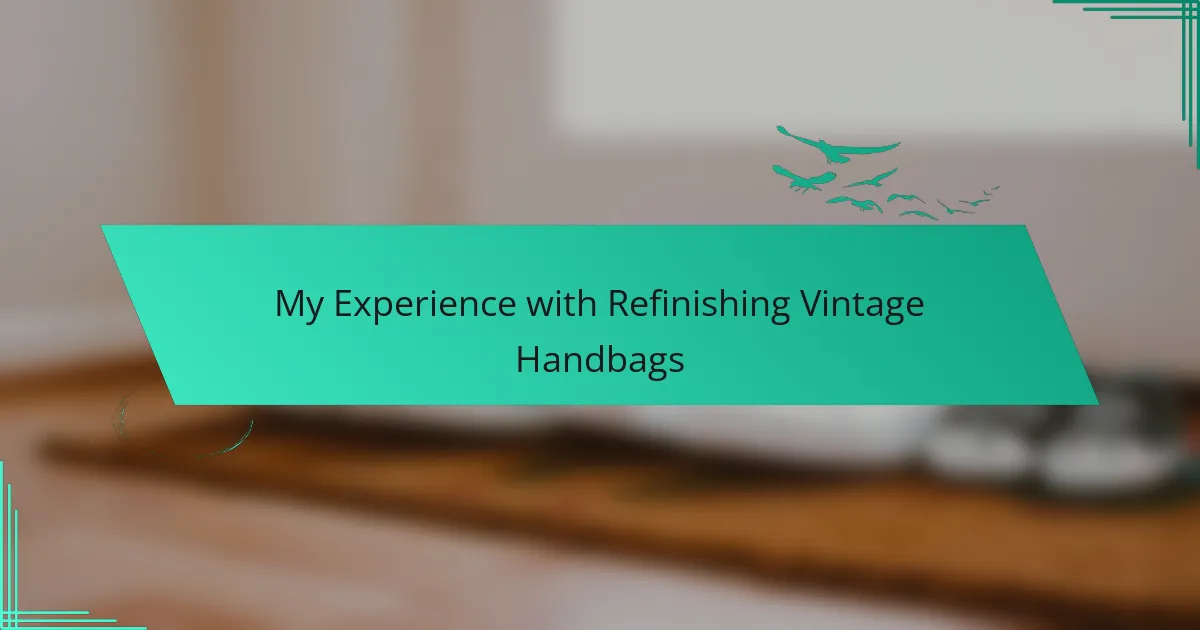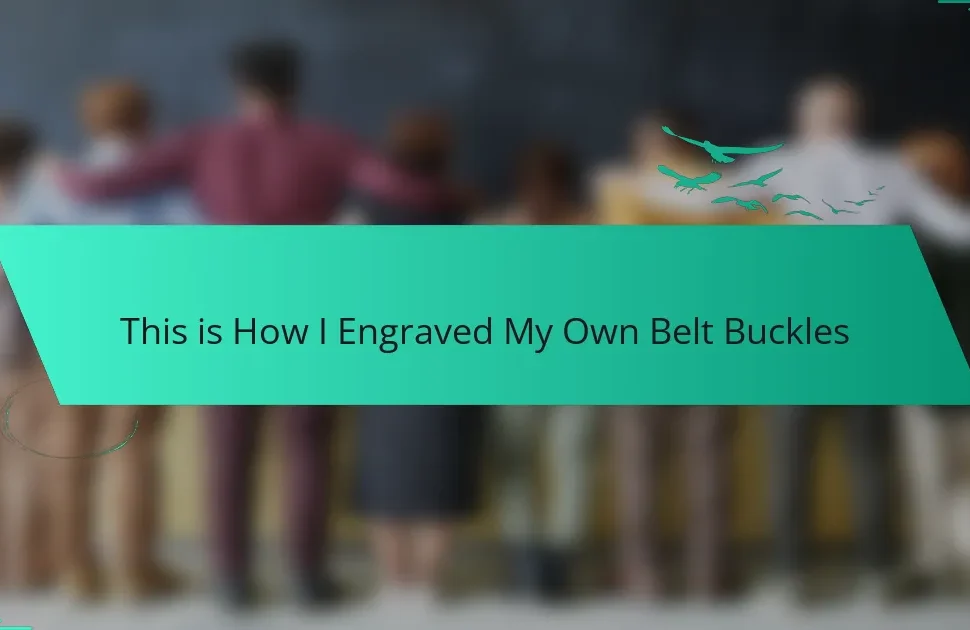Key takeaways
- Vintage handbags offer a unique blend of history and style, with quality materials and design reflecting their era.
- Refinishing allows for personalization, sustainability, and deepens emotional connections with the handbags.
- Essential tools for refinishing include cleaning cloths, leather conditioner, acrylic paint, and leather glue.
- Successful refinishing requires patience, embracing imperfections, and conducting tests on inconspicuous areas to avoid mistakes.

Understanding Vintage Handbags
Vintage handbags are a perfect blend of history and style, each piece telling a unique story through its design and craftsmanship. I remember the first time I held a vintage handbag—its weight and texture instantly transported me to another era. The materials used, often high-quality leather or unique fabrics, have a distinct charm that modern bags simply can’t replicate.
When I started exploring vintage handbags, I learned that recognizing quality is essential. Here are some key features to consider:
- Materials: Look for genuine leather, suede, or high-quality fabric that shows character.
- Design Era: Each era has its own aesthetic, from Art Deco elegance to 70s bohemian flair.
- Brand Significance: Well-known brands often yield better craftsmanship and resale value.
- Condition Matters: Assess the bag’s condition; a little wear can tell a lovely story, but significant damage might require more work.
- Hardware Details: Examine zippers, clasps, and embellishments—these details often define the bag’s value.
Understanding these elements not only enhances appreciation but also boosts the joy of finding that perfect vintage treasure.
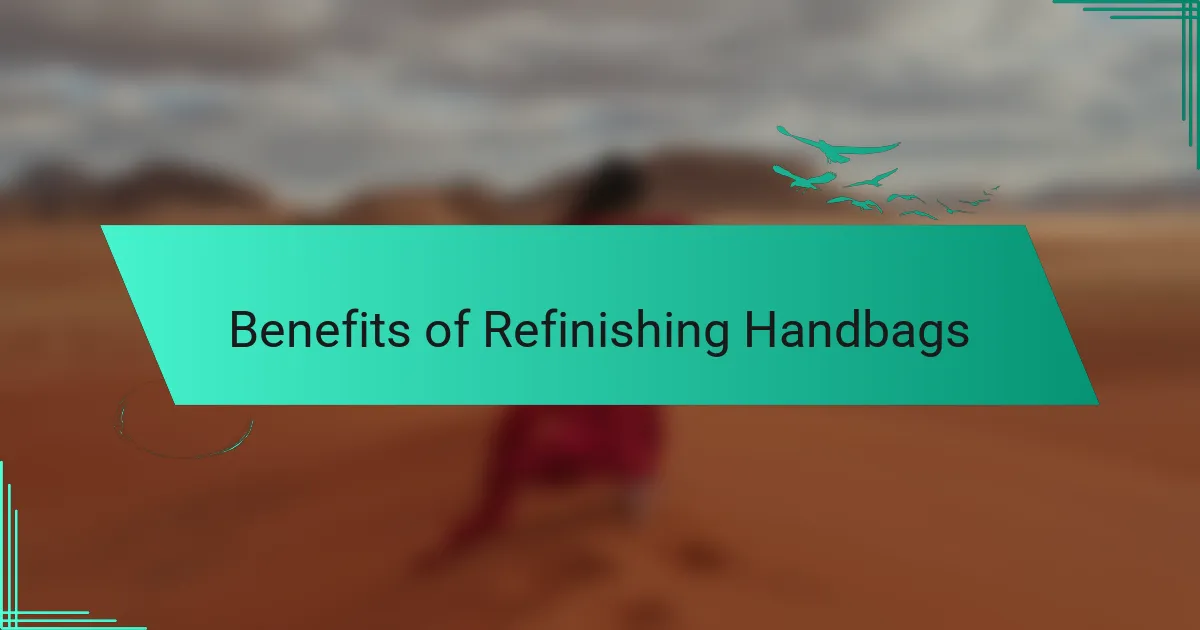
Benefits of Refinishing Handbags
Refinishing vintage handbags is an incredibly rewarding experience that can breathe new life into your cherished pieces. I’ve always found that the process not only restores the item but also deepens my connection to its history. It’s fascinating to think about the stories these handbags have carried and how a little care can ensure they’re ready for new adventures.
One of the greatest benefits I’ve experienced is the ability to customize the handbag to my personal style. For instance, I once transformed a worn-out leather satchel into a vibrant statement piece with just a few touches of paint and new hardware. This personal touch not only amplifies the handbag’s aesthetic appeal but also makes it a reflection of who I am.
In addition to boosting your creativity, refinishing a vintage handbag is a sustainable choice. Instead of contributing to waste, you’re giving an old item a second chance. This aspect alone gives me a sense of fulfillment, knowing that I’m reducing my environmental footprint while embracing DIY fashion.
| Benefit | Description |
|---|---|
| Personalization | Allows customization to match your style, making each handbag unique. |
| Sustainability | Contributes to environmental consciousness by reducing waste through refurbishment. |
| Emotional Connection | Builds a deeper bond with the history and stories behind the handbag. |

Tools Needed for Refinishing
When I started my journey into refinishing vintage handbags, I quickly learned that having the right tools can make all the difference. Initially, I experimented with basic supplies, but as I gained experience, I realized that investing in quality materials not only improved my results but also made the process more enjoyable. It’s almost like having a secret weapon—you feel empowered to tackle any handbag restoration project.
Here’s a list of essential tools you’ll need for a successful refinishing experience:
- Soft cloths for cleaning
- Leather conditioner to rejuvenate aged materials
- Acrylic paint for touch-ups
- Fine brush set for detailed work
- Leather glue for repairs
- Sandpaper for smoothing rough edges
- A needle and thread for stitching loose seams
By having these tools on hand, I’ve been able to bring many old treasures back to life. Each handbag tells a story, and with the right supplies, I can ensure they continue to do so for years to come.
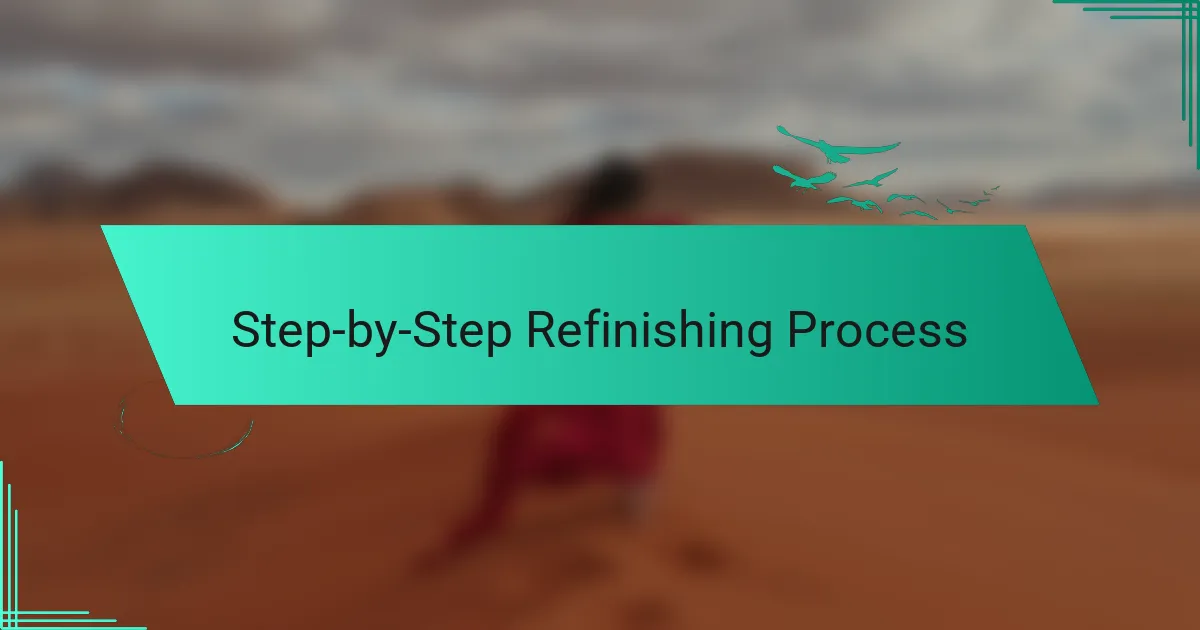
Step-by-Step Refinishing Process
When I dive into refinishing a vintage handbag, I always start with a thorough cleaning. I gently wipe down the exterior with a soft cloth, treating it as a precious artifact. This process reveals imperfections and character, making me wonder about its journey through time. After it’s clean, I often use leather conditioner, allowing the material to absorb moisture and become supple again. Isn’t it fascinating how a little care can rejuvenate a worn-out treasure?
Next comes the fun part—adding my personal touch! For a faded handbag, I’ve enjoyed using acrylic paint to enhance its colors. One time, I transformed an old black leather purse into a rich burgundy that felt more me. I apply the paint with a fine brush, carefully capturing details like stitching or embossed patterns. It’s a beautiful reminder of how creativity can breathe new life into something once forgotten.
Finally, I focus on the finishing touches. This includes addressing any loose threads or hardware that needs reattachment—every detail matters. Using leather glue for repairs has been an effective solution for me, ensuring the handbag is structurally sound. It’s like putting the final seal on a work of art; every small adjustment strengthens the bag’s story. Have you ever felt that rush when a project comes together just right? That’s how I feel at this stage!

Common Challenges in Refinishing
Refinishing vintage handbags can sometimes feel like navigating a maze. I’ve faced my fair share of challenges along the way. For instance, dealing with stubborn stains can be incredibly frustrating. I remember tackling a beautiful 1960s bag that had an ink blot that just wouldn’t budge. It took multiple cleaning methods before I finally found something that worked, but the satisfaction of restoring that bag made it all worthwhile.
Another common hurdle is matching the original color. When I was refurbishing a vintage clutch, I thought I could easily find a paint that matched the beautiful teal shade it once had. I learned the hard way that color matching is an art in itself. I spent hours testing different shades before finally creating a mix that captured the original vibrancy. It was a lesson in patience, but I enjoyed the process of trial and error.
Finally, don’t underestimate the importance of time and proper technique. Rushing through stages, especially drying times for paint or conditioner, can lead to a less polished result. I can’t tell you how many times I tried to hurry along, only to face smudges or sticky surfaces later. Taking a moment to breathe and let each step unfold can truly elevate the final outcome. Have you ever experienced that urge to push through just to see the end result? Sometimes, slowing down is the key to perfection.

My Personal Refinishing Journey
My journey into refinishing vintage handbags has been quite the adventure. The first piece I worked on was a distressed leather bag from the 70s that instantly spoke to me. As I cleaned off the years of wear and tear, I felt as if I was peeling back history, each layer revealing a story that had long been hidden. It’s moments like these that make me appreciate the artistry behind vintage fashion.
One experience that stands out is when I decided to give a classic 50s handbag a fresh look. I vividly remember selecting a warm shade of mustard for the paint, thinking it would bring out the bag’s personality. The transformation was magical—it went from drab to fab in no time! It made me realize how powerful a little creativity can be. Have you ever had a moment where you felt your artistic choices truly transformed something? Those are the moments I live for!
Of course, not every project has gone smoothly. I once struggled with a bag that had a stubborn stain—this ink mark that just wouldn’t budge. After numerous cleaning attempts, I felt like giving up. But the satisfaction I felt when I finally eliminated that stain reinforced the idea that patience pays off. It’s this rollercoaster of emotions—frustration mixed with triumph—that makes refinishing such a rewarding pursuit.
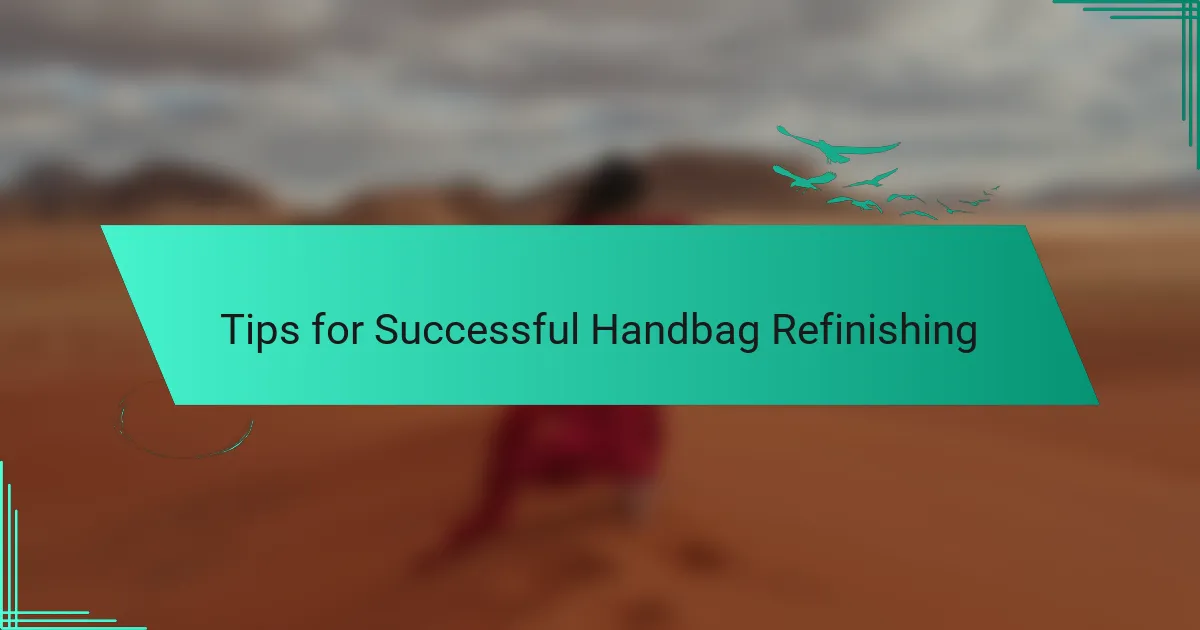
Tips for Successful Handbag Refinishing
When I refinished handbags, one of the first things I learned was the magic of patience. I once rushed into a project, eager to see the transformation unfold. However, I quickly discovered that allowing time for paint to dry or conditioner to fully absorb truly makes a difference. Have you ever felt the urge to hurry through a project, only to realize later that slowing down could enhance your results? Taking that time often results in a higher-quality finish that you’ll be proud to show off.
Another tip I can’t stress enough is to embrace the imperfections. I remember working on a vintage bag that had scuffs and scratches, and instead of trying to conceal them completely, I chose to celebrate their uniqueness. These marks tell a story—like the faint scars on our skin. Have you ever looked at a piece of art or a well-loved item and found beauty in its flaws? That’s the essence of vintage fashion, and it can guide your refinishing choices beautifully.
Lastly, always test products on a small, inconspicuous area first. I learned this lesson the hard way when I applied a new conditioner, only to realize it altered the color in a visible spot. I felt a wave of panic, thinking I had ruined a cherished handbag. Have you ever been in a similar situation? Remembering to do a patch test could save you from potential heartache and help ensure that your refinishing project turns out just as you envisioned.
